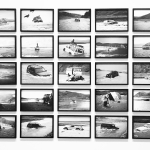Driving in poor conditions demands a heightened level of awareness and skill. Whether it’s rain, fog, snow, or any other challenging weather, navigating your vehicle safely is paramount. This article will provide practical tips for driving safely in adverse conditions, with a particular focus on navigating the unique climate of San Diego.
Understanding Weather Conditions in San Diego
San Diego is known for its generally sunny and mild weather. However, it’s not immune to poor driving conditions. Occasional heavy rainfalls, fog, and even rare instances of snow in the surrounding mountains can create challenging driving scenarios. Being prepared for these unusual conditions is key to ensuring your safety on the road and can help you avoid a call to a car accident attorney in San Diego.
Basic Safety Tips for All Drivers
Slow Down: The simplest and most effective way to avoid accidents in poor conditions is to reduce your speed. Slower speeds give you more time to react to unexpected hazards.
Increase Following Distance: In wet or slippery conditions, stopping distances can double or even triple. Increasing the space between you and the car in front gives you a greater safety margin.
Use Your Lights Wisely: In poor visibility, use your headlights to see and be seen, even during the day. However, avoid using high beams in fog, as they can reflect off the fog and impair visibility further.
Regular Vehicle Maintenance: Ensure your vehicle is in good condition. Check your tires, brakes, lights, and windshield wipers regularly. Properly maintained vehicles are better equipped to handle adverse conditions.
Navigating Rain and Wet Roads
Rain is the most common adverse weather condition in San Diego. Wet roads can be treacherous, leading to reduced traction and increased risk of hydroplaning.
Avoid Sudden Movements: Sudden turns or brakes can cause skidding. Gentle maneuvers are safer.
Beware of Hydroplaning: This occurs when your tires lose contact with the road and ride on a layer of water. If you start to hydroplane, ease off the accelerator and steer straight until you regain control.
Check Tire Tread Depth: Good tire tread is essential for traction on wet roads. Replace tires that are worn down.
Dealing with Fog
Fog can drastically reduce visibility, making it one of the most dangerous driving conditions.
Use Low Beam Headlights: High beams can reflect off the fog, making it harder to see.
Reduce Speed and Listen: Often in fog, you can hear traffic before you see it. Reducing your speed and opening your window slightly to listen for other vehicles can be helpful.
Rare Snow and Ice Conditions
While snow and ice are rare in San Diego, they can occur, especially in the surrounding higher elevations.
Use Chains if Necessary: In snowy conditions, chains can provide the necessary traction.
Know Your Brakes: Whether you have anti-lock brakes or not, the key to stopping in icy conditions is gentle, steady pressure.
What to Do in Case of an Accident
Despite your best efforts, accidents can still happen. If you’re involved in a collision, especially in a place like San Diego, it’s important to know what to do next. Seeking advice from a car accident attorney in San Diego can be a crucial step. They can provide legal guidance and help you understand your rights and responsibilities.
Staying Calm and Prepared
The key to safe driving in poor conditions is to stay calm and prepared. Understanding the specific challenges of the weather and road conditions you’re facing, and adjusting your driving habits accordingly, can significantly reduce your risk of an accident.
Remember, safety is not just about you; it’s about everyone on the road. By driving responsibly and staying vigilant, you contribute to the safety and well-being of all road users.





